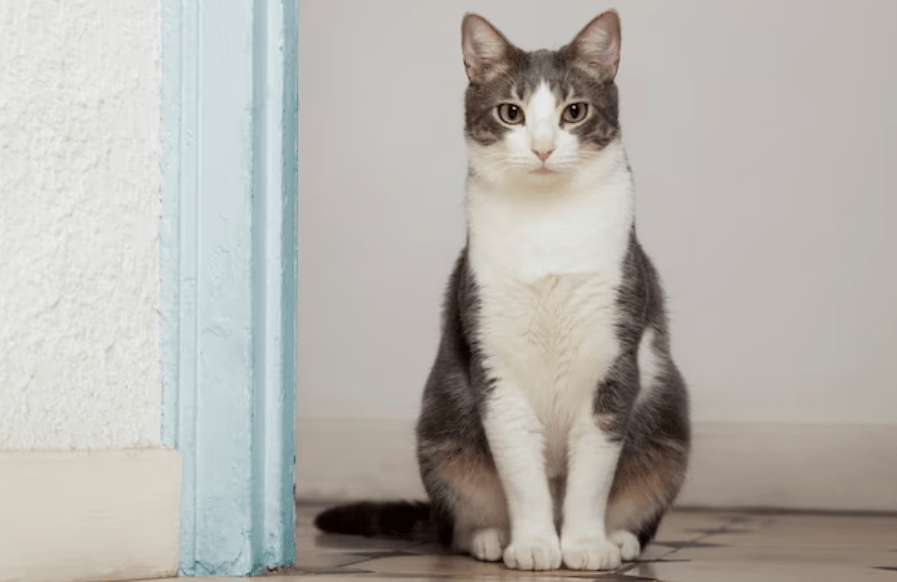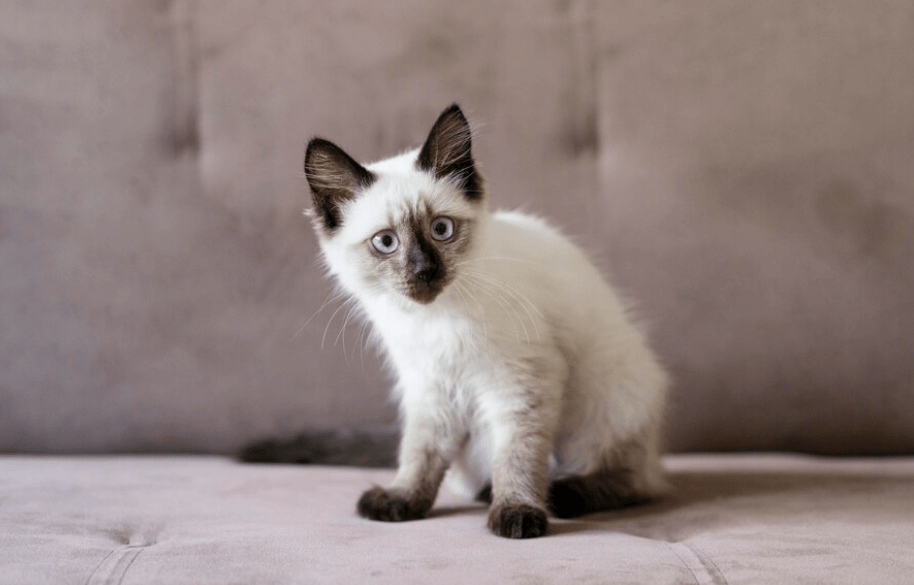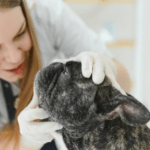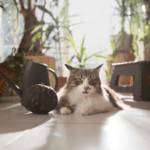Step into the fascinating world of feline mystery as we unravel the enigmatic origin behind why a Ragdoll cat is called, well, a ‘Ragdoll’! These captivating creatures have captured the hearts of cat lovers worldwide with their striking appearance and gentle disposition. But have you ever wondered where this peculiar name came from? Join us on a journey through history, behavior, physical traits, selective breeding, and enduring popularity as we uncover the secrets behind this intriguing moniker. Prepare to be intrigued and delighted by the tale of how these lovable felines earned their distinctive title; it’s a story that will leave you perplexed. So sit back, relax, and let’s dive into the captivating world of Ragdoll cats together.
Historical Roots: Tracing the Origins of the ‘Ragdoll’ Moniker
Centuries ago, in the annals of feline history, a breed emerged that would eventually be known as the Ragdoll. But how did they come to be called by this peculiar name? To trace the historical roots of their moniker, we must journey back to the 1960s in Riverside, California.
It was here that a remarkable woman named Ann Baker first began breeding these unique cats. Legend has it that she stumbled upon a white Persian cat named Josephine who possessed an extraordinary trait: when picked up, she would go completely limp like a ragdoll! This fascinating behavior became synonymous with the breed and ultimately inspired their whimsical name.
However, there are some who believe that there might be more than meets the eye when it comes to unraveling the origins of this captivating epithet. Some theories suggest that “Ragdoll” may have been chosen as an homage to traditional rag dolls, beloved childhood toys with floppy limbs and soft bodies reminiscent of these gentle felines’ relaxed nature.
Regardless of its precise origin story, one thing is certain: The ‘Ragdoll’ name has endured through generations and become intrinsically tied to these charming cats. It’s a testament not only to their physical characteristics but also to their endearing personalities and undeniable allure.

Personality Puzzle: How the Behavior of Ragdoll Cats Inspired Their Name
The enigmatic nature of the Ragdoll cat doesn’t just lie in its name but also in its captivating personality. These feline companions are renowned for their docile and affectionate behavior, which has undoubtedly played a significant role in inspiring their name.
Ragdolls have an uncanny ability to go limp when picked up or held, resembling a floppy ragdoll toy. This unique trait is believed to be the result of selective breeding aimed at producing cats with a relaxed temperament. Their calm and gentle nature makes them ideal pets for families with children or other animals.
Despite their size, ragdolls are generally known for being mellow rather than hyperactive. They prefer lounging around and enjoying leisurely activities like sunbathing or cuddling up next to their owners. However, they still possess bursts of energy during playtime, showcasing an engaging mix of traits that make them highly lovable creatures.
It’s clear that the behavior of Ragdoll cats served as inspiration for their name. From their limp posture when held to their affectionate nature and sociability, every aspect reflects the puzzle pieces coming together perfectly, creating a breed worthy of admiration by cat lovers worldwide.
Physical Characteristics: Linking the ‘Ragdoll’ Name to Distinctive Traits
One look at a Ragdoll cat, and it’s easy to see why they earned their unique name. These feline beauties possess a striking combination of physical traits that set them apart from other breeds.
First and foremost, ragdolls are known for their large and captivating blue eyes. These enchanting orbs seem to reflect the soulful nature of these gentle creatures. Their eyes have an almost hypnotic effect on anyone fortunate enough to gaze into them.
Perhaps one of the most endearing features of ragdolls is their propensity for going limp when picked up or held, hence the term “ragdoll.” When cradled in your arms like a baby doll, they completely relax all the muscles in your body. It is as if they trust you implicitly and surrender themselves completely without resistance.
The physical characteristics of Ragdoll cats play a significant role in enhancing their appeal as beloved pets worldwide. With those stunning blue eyes gazing back at you from under that soft coat while snuggled contently in your embrace, it’s truly no wonder why these felines are called ‘Ragdolls.
Breeding Secrets: Discovering the Role of Selective Breeding in Naming Ragdoll Cats
Selective breeding has played a significant role in shaping the distinctive characteristics of the beloved Ragdoll cat breed. But how does this connect to their name? Let’s delve into the intriguing backstory.
When Ann Baker first began breeding these enchanting felines in the 1960s, she implemented a selective breeding program focused on specific traits. She aimed to create cats with gentle personalities and striking physical attributes that would capture hearts everywhere.
Through careful mating and genetic selection, Baker was able to develop cats with calm temperaments and relaxed dispositions. These qualities were reminiscent of ragdolls, those floppy dolls children love to cuddle, and thus, the breed became known as “Ragdolls.”
Baker’s dedication to producing friendly companions meant that only cats displaying docile behavior were used for further breeding. This method helped solidify these endearing traits throughout subsequent generations, ensuring that Ragdolls remained true to their name.
The deliberate process of selecting certain genes over others led to consistent patterns in appearance as well. The large size, silky fur, captivating blue eyes, and distinctive color point markings are all results of this meticulous selective breeding.
Today, thanks to dedicated breeders around the world who continue Ann Baker’s legacy, Ragdolls maintain their unique charm and allure. They are adored not just for their beautiful looks but also for their affectionate nature, a testament to decades of purposeful selection.
So next time you gaze upon a majestic Ragdoll cat lounging gracefully or showering you with unconditional love, remember that its very name is intricately tied to years of intentional breeding practices designed specifically for your delight.
Popularity and Legacy: Exploring How the ‘Ragdoll’ Name Stuck Over the Years
The popularity of Ragdoll cats has grown exponentially over the years, with their endearing personality, distinctive physical characteristics, and intriguing names all contributing to their enduring appeal. But how exactly did the name ‘Ragdoll’ come to be associated with these captivating felines?
While there may not be a definitive answer to this question, one theory suggests that it was Ann Baker’s unique breeding program and her promotion of these cats as floppy and docile companions that played a significant role in cementing the name. By carefully selecting specific traits through selective breeding, Baker created a breed of cat that truly lived up to its namesake.
Furthermore, as Ragdolls gained recognition in cat shows and were featured in various media outlets, including television programs and magazines, their popularity soared even higher. The allure of these beautiful cats, combined with their charming temperament, made them irresistible to many cat lovers.
Over time, generations of dedicated breeders have continued to maintain the integrity of this remarkable breed while preserving its distinct characteristics. The steadfast commitment by enthusiasts worldwide has ensured that Ragdolls remain true rag dolls, friendly felines who go limp when picked up or held.
In conclusion (without using those words), although there may not exist an explicit origin story behind why they are called ‘Ragdolls’, it is clear that their name resonates perfectly with both their appearance and disposition. From humble beginnings within Ann Baker’s cattery to becoming beloved household pets worldwide today, one thing remains certain: the enigmatic origin of the ‘Ragdoll’ name only adds to their allure.


